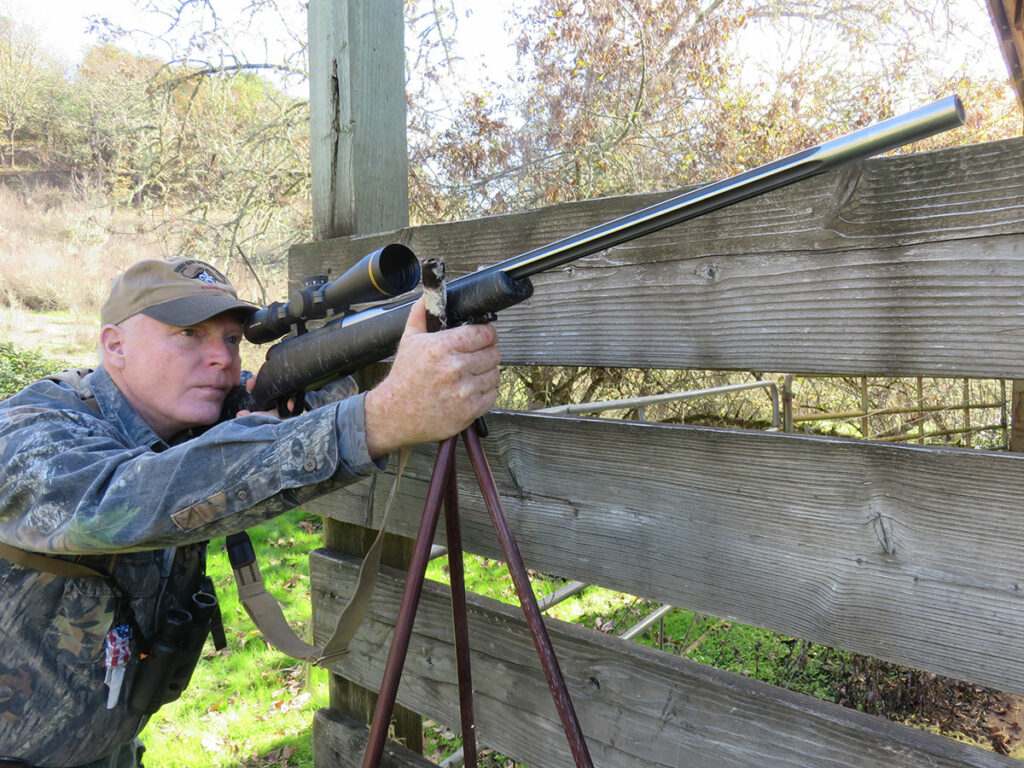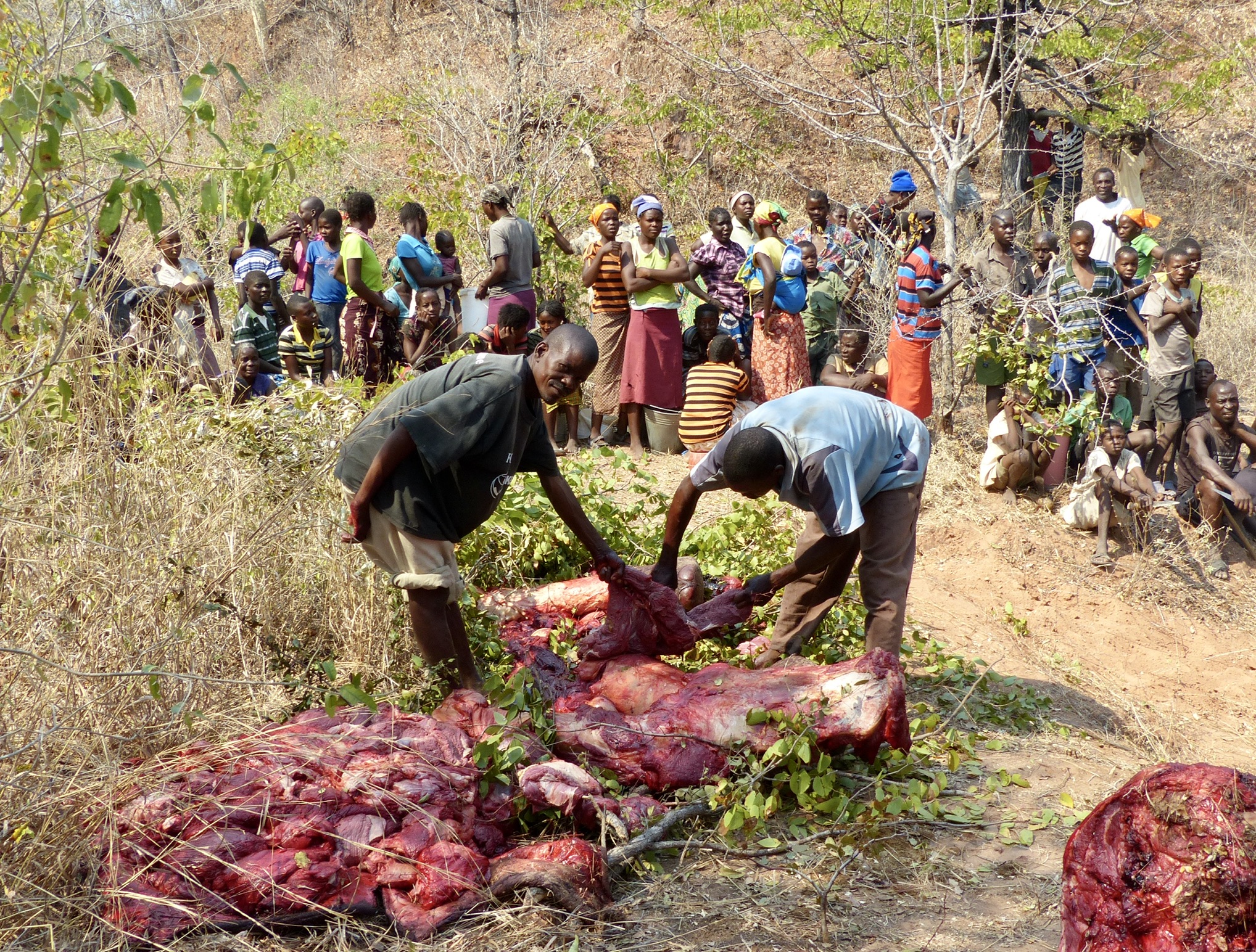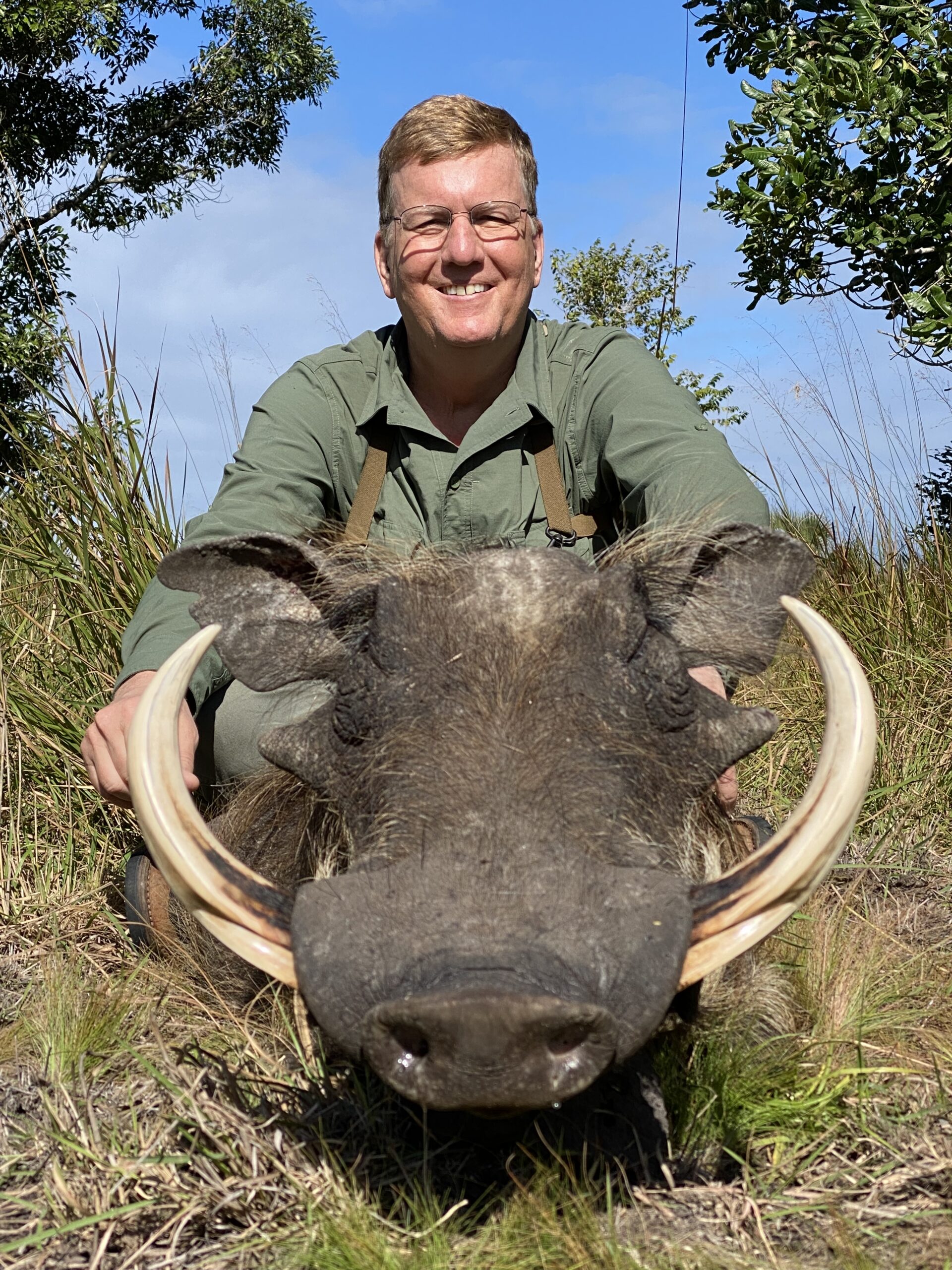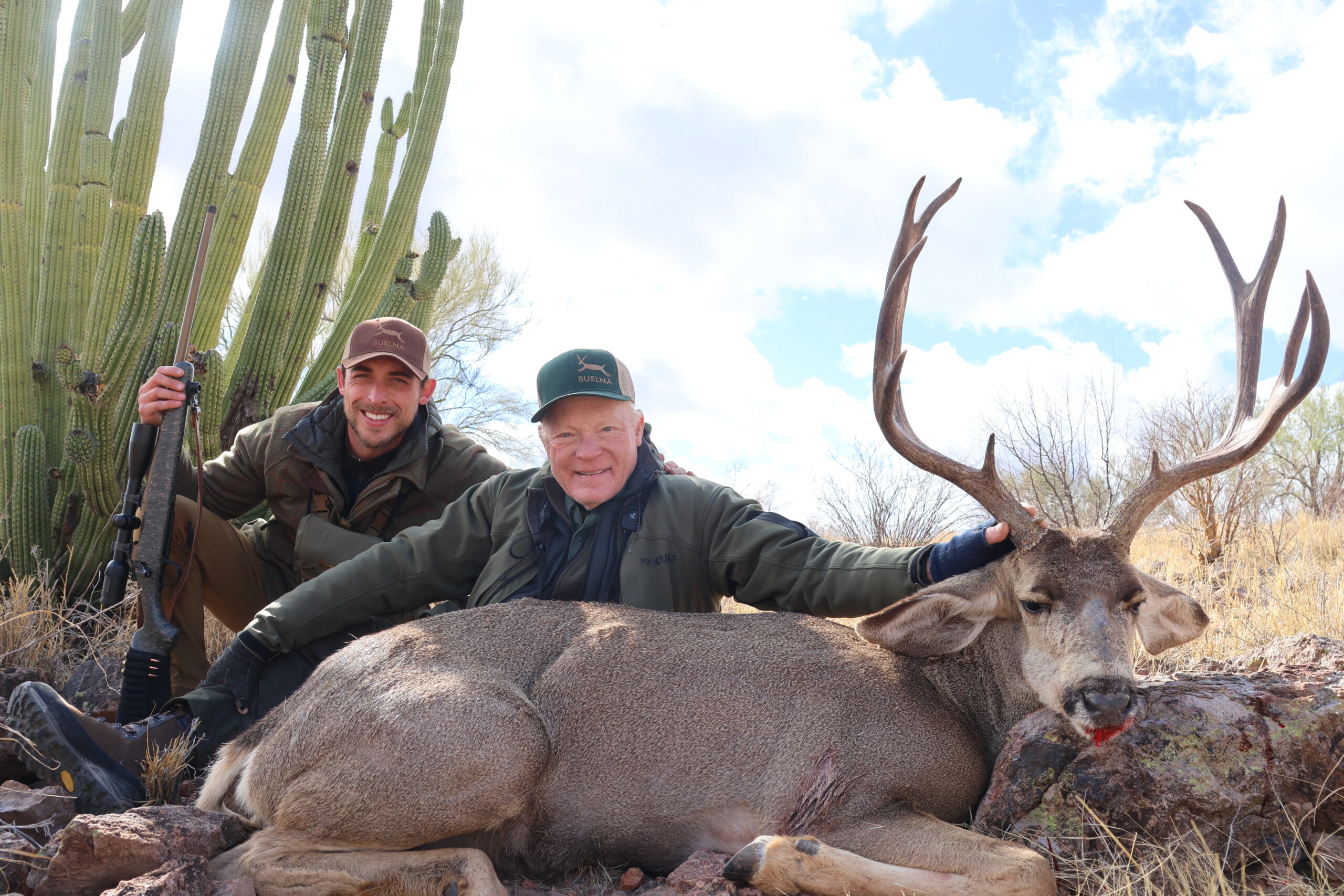Campfire arguments about the perfect rifles and cartridges to take on safari are fun. The truth, however, is that how well you shoot has much more to do with success than exactly what you’re shooting.
At our conventions for the past 25 years I’ve been part of a panel on “Your First African Safari.” I sort of bat “cleanup” and talk about gear, packing tips and guns and loads. But the most important thing I talk about is shooting sticks. In one form or another, sticks are useful almost anywhere, but in Africa they are almost universal.
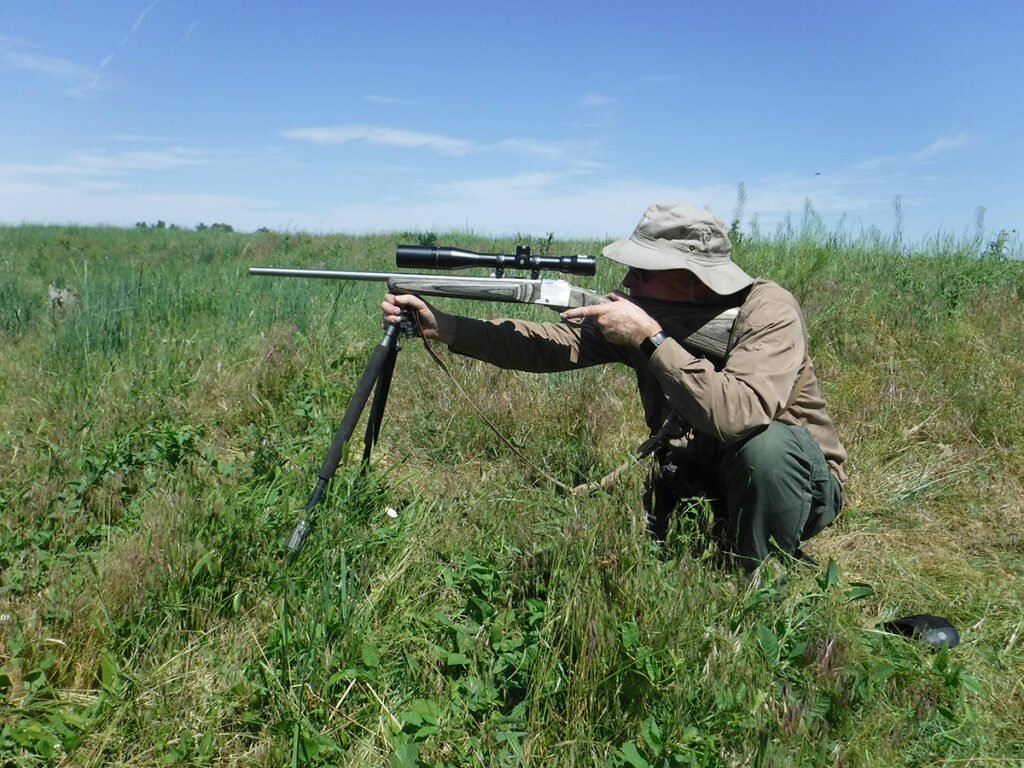
There are good reasons. Most African plants have nasty thorns, so flopping down prone may not be the best idea. And, vegetation often precludes low shooting positions. Standing on sticks allows you to shoot over low bush. In Africa, you are almost never hunting alone. So, when you leave the vehicle for a stalk, your PH grabs his rifle and one of the trackers grabs the sticks.
Here’s how it works. Typically, you go single file, a sharp-eyed tracker in the lead, followed by the PH, followed by you. So, just hours into your first day on safari you approach a small clearing and the lead tracker spots an exceptionally fine gazork on the far side. He immediately sets up the sticks and fades to one side. With binoculars, your PH confirms good horns, fades to the other side, and says, “My dear sir, that is a lovely gazork. I think you should take him!”
You take two careful steps forward, quietly chamber a round, then slowly raise your rifle to the intersection of the sticks, find the gazork in your scope. You slip your safety, take a deep breath and take your shot. Simple. Effective.
THE BASICS
The thing is, you do not want that all important first day in Africa to be your introduction to stickology. We’ll talk about practice later, but sticks are in such common use that you need to arrive on safari comfortable and confident in their use.
It isn’t rocket science, but they take some getting used to. Over there, three-legged sticks are most common, usually home-made from three saplings, bases even but one leg slightly shorter so that, when the legs are extended, you have a fork on top to rest the rifle across. Typically, they tie them together with a rubber strip cut from an old inner tube. Quiet and flexible. Even in Africa “store-bought” sticks are increasingly common (often left by hunters), but the principles are all the same.
Two things are most important; Getting the height right for you and learning how best to use your supporting hand to secure the rifle onto the sticks. When the legs are spread, I like the junction of the sticks at about my first shirt button, just below the base of my throat. With the sticks at this height, as I address them I can get my feet slightly apart (that firm foundation my drill instructors taught me). And I can lean slightly forward into the sticks. With smaller hands, Donna finds it easier to wrap her supporting hand around plain old wooden sticks of a bit over a half-inch in diameter.
Your height makes a huge difference. If the sticks are set too high, you’ll be on tippy-toes, struggling. Too low isn’t as bad, you just need to lean forward more, but just right is the goal. It’s essential to learn the proper height and then show whomever might be managing your sticks how you like them set up.
Donna is six inches shorter than I am. I know to set sticks lower for her, but she has a terrible time with six-foot-plus guides setting them so high that getting a shot is impossible. During that all-important sight-in session on the first day of a hunt, it’s critical to show your hunting team the right height for you—and practice, with or without live fire. This is especially important if there’s a significant height disparity.
Hand placement is a very individual thing, depending the size of your hands and type of sticks you’re using. There’s no right or wrong, but you need to learn what works best for you. The only essential: Only the forend, never the barrel, must rest on the intersection!
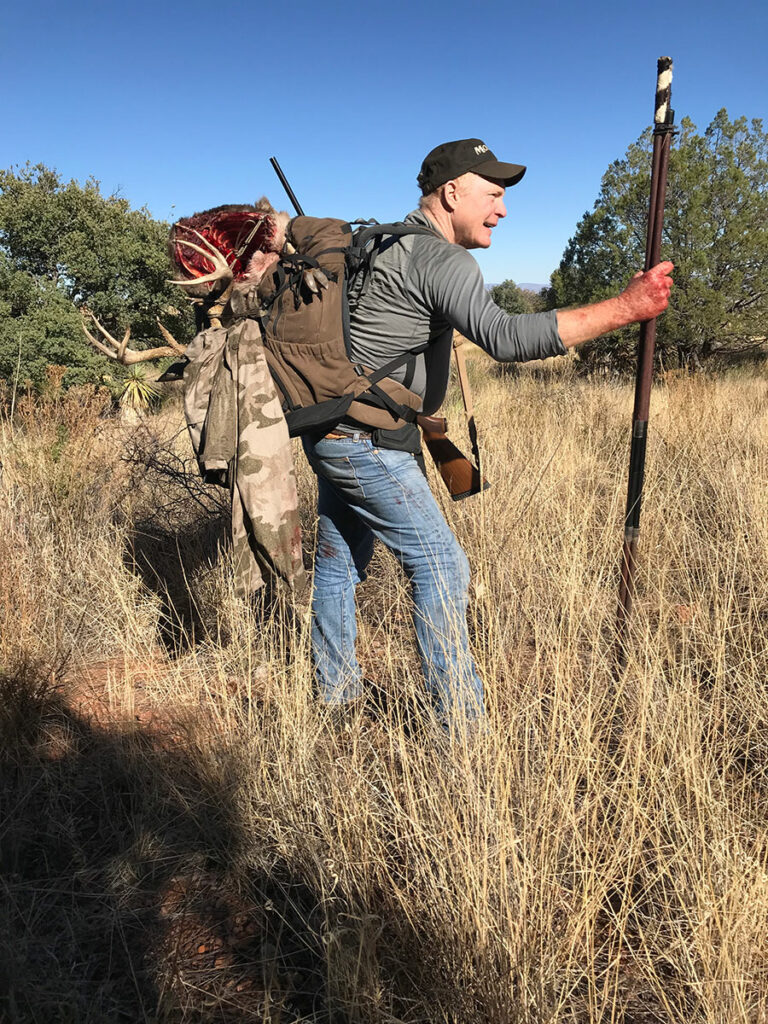
Some shooters prefer to grasp the forend a bit back and rest the tip over the sticks; others grasp it forward, reaching past the sticks, resting the forend well back from the tip. I prefer to grasp the forend with thumb and forefinger and wrap my other fingers around the intersection. I pull back with my supporting hand while I lean into the rifle, thus tying everything together with isometric support. My hands aren’t large, so you might try this method. Experiment and see what works best for you and then be consistent.
ENHANCEMENTS
Always, there’s a limit to how much you want to carry and how many hands there are for carrying. But sometimes two sets of sticks are better than one. When starting a stalk in open country, such as much of Namibia or the Karoo, or the open floodplains in Mozambique, we’ll have a tracker carry an extra set.
There are two primary ways to employ “double sets.” The first set is employed conventionally; the second set is placed under the butt near the toe of the stock. It can take some adjustment to get the height right, but you can achieve almost benchrest stability. A while back, Mark Haldane and I spotted a really huge Lichtenstein’s hartebeest on a wide-open floodplain. After several failed approaches, we tried angling toward them, just walking slowly, closing the distance almost imperceptibly. At 375 yards they were getting nervous, so we set up. That’s not so far, but the wind was gusting so that it was hard to hold still. We put up the second set under the butt, fiddled a bit, and had near-perfect stability.
The other method is faster, but not quite as steady. My friends at Tim Fallon’s SAAM shooting schools call it the “chicken wing.” Again, the first set is used conventionally. Then the second set, legs grounded, is wedged tightly under the armpit on the shooting side.
It’s amazing how much steadier you can be if you can stabilize your supporting elbow. Always remembering I’m left-handed and so is Donna, often I’ll set up to shoot so I can lean my left elbow—or left side—against a tree or boulder.
Provided you’re not alone, there’s a quick option I call the “buddy system.” You get on the sticks, and from your strong or shooting side, a hunting guide or partner bends forward and grasps the two rear tripod legs. Then you rest your shooting elbow on his or her shoulder. With a bit of practice, I figure the buddy system will give you at least another 50 to 75 yards of steady, confident shooting. Again (and always) with practice, a second set of sticks can double your effective range.
MODERN OPTIONS
Any support is always better than none. Some people are naturally steadier than I and do amazingly well by grounding a hiking staff or monopod and shooting off of it. For me, the shot had better be close, with just one leg. Others do extremely well, standing with tall bipods, but with two legs I tend to get an up-and-down wobble.
Perhaps I’ve spent too much time in Africa, but I’m most comfortable and steadiest with three-legged shooting sticks, so much so that I put them in my gun case and carry them almost everywhere. The ones I use the most are from African Sporting Creations (www.africansportingcreatons.com) with jointed legs, so, if a sitting or kneeling shot is in the offing, I can quickly shorten them up. In rough country, I use them as a walking staff—but it’s important to secure the legs together near the bottom to prevent rattling and also to keep one leg from catching.

Sticks and shooting aids of various types have become more popular and there’s a bewildering variety. Finger-adjustable Trigger Sticks from Primos (www.primos.com) and BOG Pods (www.boghunts.com) are extremely popular, and come in an array of options.
Personally, I prefer simplicity, which translates to speed of use and I also prefer to keep weight to a minimum. Also, Murphy’s Law applying, I worry about gears and adjustable legs failing at the wrong moment. But development continues and there are some extremely clever and stable systems on the market.
I’ve spent quite a lot of time with the Javelin system from Spartan Precision Equipment (www.javelinbipod.com), available from low bipods to full-up tripod systems (and a “quad” model that supports butt as well as fore-end). A major difference with this system is the “pod” attaches to the rifle almost instantly via a powerful magnet (replacing the front sling swivel stud).
Once attached, it becomes part of the rifle, offering amazing stability with no slipping. Made of lightweight, high-quality carbon fiber, the system is fairly light and strong enough to use as trekking poles in the roughest country. I used Spartan’s heavy-duty Sentinel tripod with telescoping legs in Alaska this year, using the tripod for a spotting scope stand for glassing and the legs as hiking poles.
This business of fore-and-aft support is becoming more popular, undoubtedly with far more options than I’ve laid eyes on. At our convention this year I picked up a set of 4StableSticks, made in France (4stablesticks.com). Amazingly light at just 24 ounces complete, 4StableSticks is essentially two tall bipods with the bottom of the legs joined. One supports the fore-end, the other the butt, with the fore-end support flat but ribbed, offering a lot of left-to-right movement as angles change. Like anything new, it takes some time to get the hang of it, but stability was excellent. I used it on a prairie dog shoot recently; if there’s enough stability to consistently hit prairie dogs, then there’s enough stability for anything.
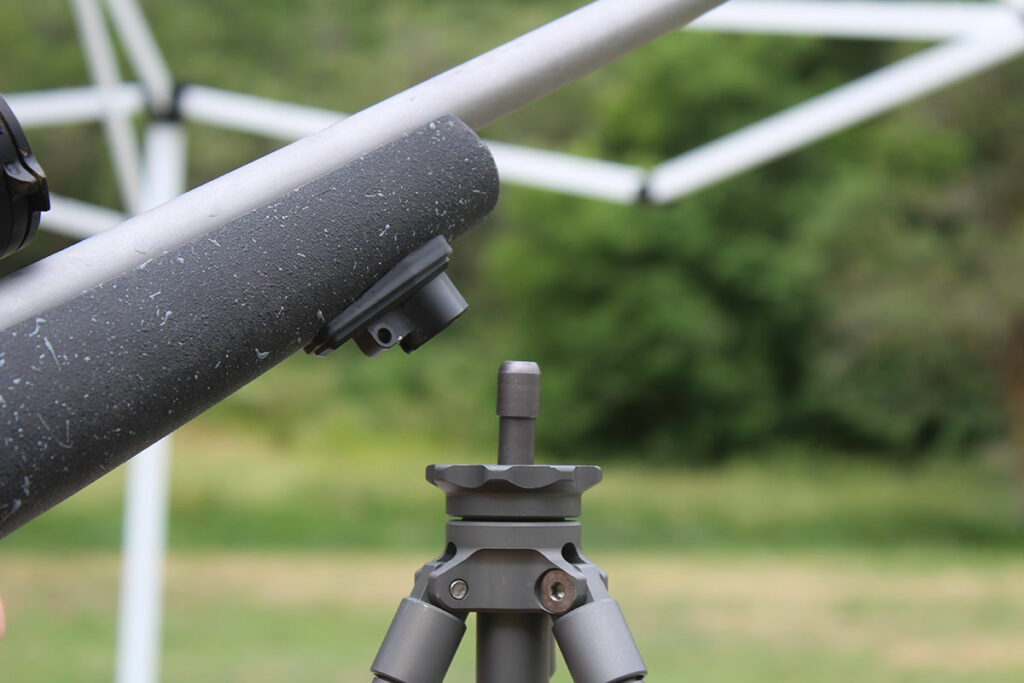
Also new and also discovered at our convention is the Stealth Pod X (www.stealthpodx.com). Also made of extremely strong carbon fiber with jointed legs and available as monopod, bipod and tripod, the strong suit of the Stealth Pod is quick assembly and amazingly fast adjustment via pressure buttons on the handles. Unlike many systems, Stealth Pod can be used from prone to standing, and since the legs can be adjusted with a touch, it’s quickly adaptable to use on uneven ground. I haven’t yet had a chance to hunt with Stealth Pod, but I intend to use it this fall.–Craig Boddington

